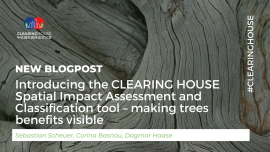This section connects to exercise 8 The air we breathe
In addition to the heat island effect and the risk of flooding, there are other factors that threaten a healthy lifestyle of the modern city dweller. However, the decreased quality of air and high levels of air pollution is possibly the greatest threat for our health. Nowadays, small particle pollution is regarded as the worst contamination in our urban atmosphere. A recent study by the University of Utrecht revealed that air pollution caused by small particles measuring less than 10 micrometres has a greater effect on our wellbeing than we assumed thus far.
Why is it so important to breathe clean air? Air pollution increases the chance on cardiovascular diseases, strokes and certain forms of cancer. It can also cause or worsen asthma and chronic bronchitis. Air pollution also causes people to die prematurely in many cities around the world. Air pollution is called an invisible killer.


But trees, shrubs, plants and even mosses help filtering harmful small particles from the air. Busy streets, but also parks and green belts near playgrounds, day care centres and schools will become cleaner if trees and shrubs can bind small particles and nitrogen dioxide that is also another effect of burning fuels. Of course, this will have to go hand in hand with decreasing pollution.
How do you know you are at a place where there is no/not much air pollution? Notice the size of the street and the kind of vehicles driving there. Also, the weather conditions may affect this: wind makes the air move and lessens the effect of air pollution.






